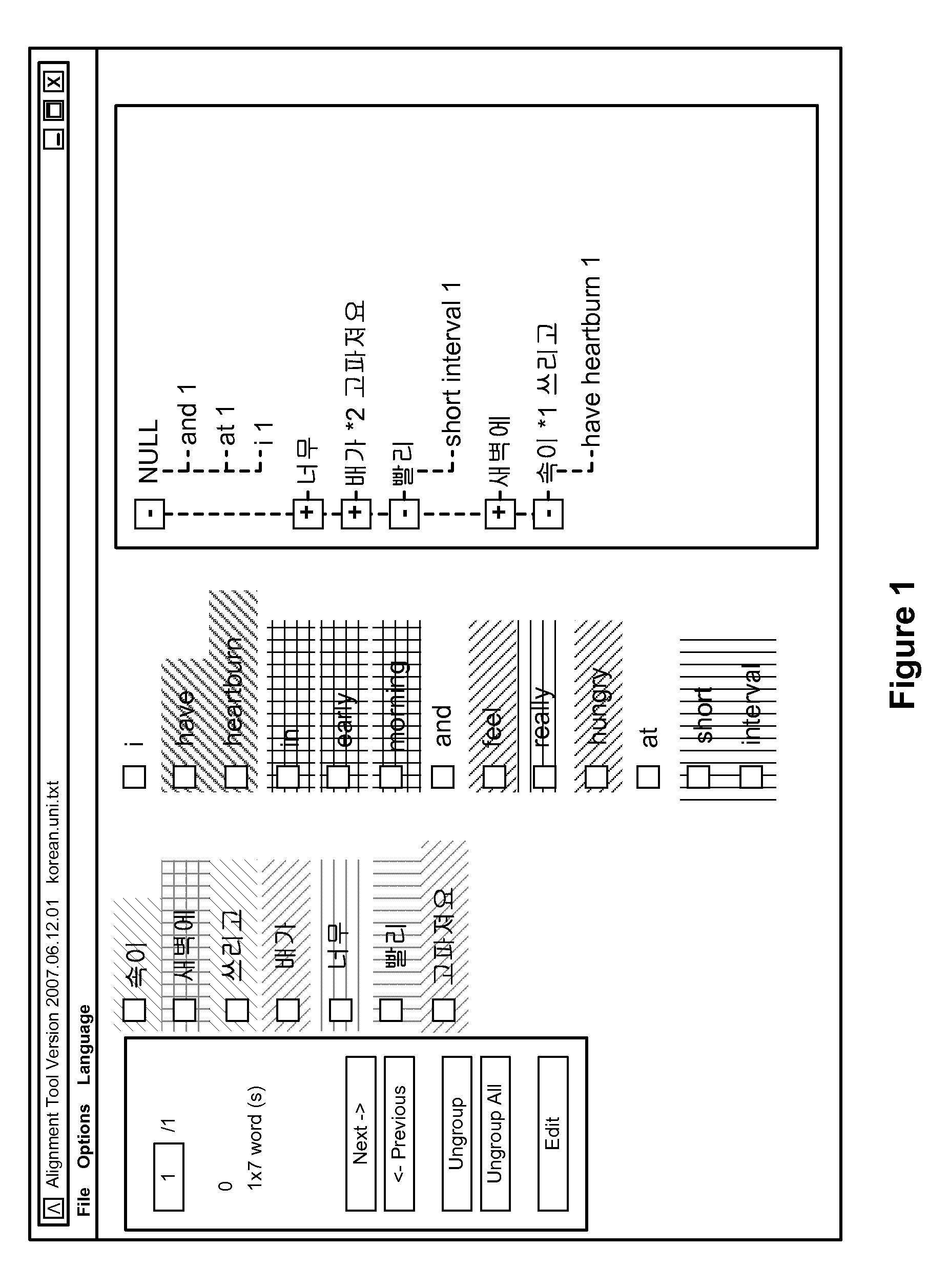Methods for using manual phrase alignment data to generate translation models for statistical machine translation
a statistical machine translation and phrase alignment technology, applied in the field of automatic translation systems, can solve the problems of not being able to collect millions of parallel sentences for rapid development of smt systems, building a machine translation system of commercial quality, etc., and achieves the effect of avoiding expert knowledge, high quality word alignment, and improving automatic translation quality
- Summary
- Abstract
- Description
- Claims
- Application Information
AI Technical Summary
Benefits of technology
Problems solved by technology
Method used
Image
Examples
Embodiment Construction
Selection of Sentences
[0013]In the preferred embodiment of this present invention, a subset of the training data is manually aligned. Although no expert skill is necessary, it is desirable to minimize manual efforts. Hence, it is essential to employ an effective method for selecting sentences to be manually aligned.
[0014]There are several ways for selecting a subset from a data set. First, a random selection is a reasonable way in that no bias is applied in the selection process and hence it can be expected to help with the overall word alignment. Common words are most likely to be included in the random selection process and be included in the accurate manual alignment effort, which leads to a balanced improvement in the supervised training process for word alignment.
[0015]Second, one can order training sentence pairs with respect to the frequency of words in sentences, and select sentences that have many rare words. The underlying assumption is that automatic word alignment using ...
PUM
 Login to View More
Login to View More Abstract
Description
Claims
Application Information
 Login to View More
Login to View More - R&D
- Intellectual Property
- Life Sciences
- Materials
- Tech Scout
- Unparalleled Data Quality
- Higher Quality Content
- 60% Fewer Hallucinations
Browse by: Latest US Patents, China's latest patents, Technical Efficacy Thesaurus, Application Domain, Technology Topic, Popular Technical Reports.
© 2025 PatSnap. All rights reserved.Legal|Privacy policy|Modern Slavery Act Transparency Statement|Sitemap|About US| Contact US: help@patsnap.com



